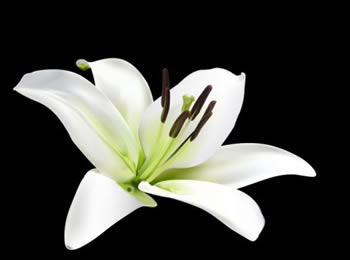Difference between Lily and Orchid
Key Difference: There is only one true difference between a lily and an orchid. A lily has long stamens that it is characteristically known for. Orchid, on the other hand, lack these stamens and rather have a solid column in the center of the flower that holds the pollen.
 There are many flowers on this blue marble. Due to which it can get very hard to differentiate between them. Flowers manage to fool even horticulturists, so what chance does a layman have. To cover the basis, both lily and orchid are flowers. However, they are not just a simple flower. Each type represents a whole family, which includes many different species of flowers.
There are many flowers on this blue marble. Due to which it can get very hard to differentiate between them. Flowers manage to fool even horticulturists, so what chance does a layman have. To cover the basis, both lily and orchid are flowers. However, they are not just a simple flower. Each type represents a whole family, which includes many different species of flowers.
Lilies belong to the Lilium genus of the Liliaceae family. This genus includes 109 true species of lilies, as well as a variety of hybrids and cultivars developed by horticulturists. Similarly, the orchids belong to the Orchis genus in the Orchidaceae family. There are between 21,950 and 26,049 true species of orchids, plus more than 100,000 hybrids and cultivars.
As the orchid family is so large and diverse, some orchids look just like true lilies, which make differentiating them even harder. This task is made even harder by the fact that some flowers are colloquially called lilies but in fact are not lilies at all. This includes the water lily, fire lily, lily of the Nile, calla lily, trout lily, kaffir lily, cobra lily, lily of the valley, daylily, ginger lily, Amazon lily, leek lily, Peruvian lily, among others.
 Due to the fact that there are so many different orchids, most differences between orchids and lilies are discounted. No matter what differences may appear, they will be negated by another type of orchid. There is only one true difference between a lily and an orchid. A lily has long stamens that it is characteristically known for. Orchid, on the other hand, lack these stamens and rather have a solid column in the center of the flower that holds the pollen.
Due to the fact that there are so many different orchids, most differences between orchids and lilies are discounted. No matter what differences may appear, they will be negated by another type of orchid. There is only one true difference between a lily and an orchid. A lily has long stamens that it is characteristically known for. Orchid, on the other hand, lack these stamens and rather have a solid column in the center of the flower that holds the pollen.
There are also some usual differences in the shape of the flower or in the bulbs and roots. However, again these differences might be superficial and may be depended on the particular species that is being differentiated.
Comparison between Lily and Orchid:
|
|
Lily |
Orchid |
|
Kingdom |
Plantae |
Plantae |
|
Classification |
Embryophyta – Spermatophyta – Angiosperms – Monocots |
Embryophyta – Spermatophyta – Angiosperms – Monocots |
|
Order |
Liliales |
Asparagales |
|
Family |
Liliaceae |
Orchidaceae |
|
Genus |
Lilium |
Orchis |
|
Subfamilies |
Lilioideae |
Apostasioideae Horaninov Cypripedioideae Kosteletzky Epidendroideae Kosteletzky Orchidoideae Eaton Vanilloideae Szlachetko |
|
Species |
109 true species, plus hybrids |
Between 21,950 and 26,049 true species, plus more than 100,000 hybrids and cultivars. |
|
Habitat |
Lilies grow in woodland habitats in the temperate Northern Hemisphere. |
The orchids grow worldwide in a variety of habitats from tropical rainforests to desert and tundra. |
|
Flower |
Lily flowers may be bowl, trumpet, recurved or funnel-shaped, but all lily flowers consist of three petals and three sepals. |
All orchid flowers contain a whorl of three sepals and a whorl of three brightly colored petals. What sets orchids apart from lilies is their labellum, or lip, which is a uniquely-shaped petal. |
|
Colors |
Whites, yellows, oranges, pinks, reds and purples. Markings include spots and brush strokes. |
Available in nearly every color imaginable. The most notable orchid color is purple or violet. |
|
Stamen |
Lily flowers typically have six long stamens within each flower. Some species have three, but this is rare. |
Orchids lack the long stamens characteristic of a lily flower. Instead, an orchid flower has a solid column in the center of the flower that holds the pollen. |
|
Roots |
Lilies grow from fleshy bulbs comprised of overlapping scales, and some develop underground stems called stolons. All lilies are perennials, but most of these are herbaceous, which means they do not have a woody stem. |
Orchids may grow from fleshy roots that clasp onto trees. These types are classified as epiphytes and their roots grow either horizontally, swelling into false bulbs that grow leaves, or from slender roots that sprout leaves from the tips. Orchids may also grow from underground tubers and rhizomes. These are classified as terrestrial. |
|
Season |
The plants are late spring- or summer-flowering. |
Depends on the species. As there are so many different varieties, one can find one for any season. |
Image Courtesy: shopclues.net, people.ucsc.edu









Add new comment